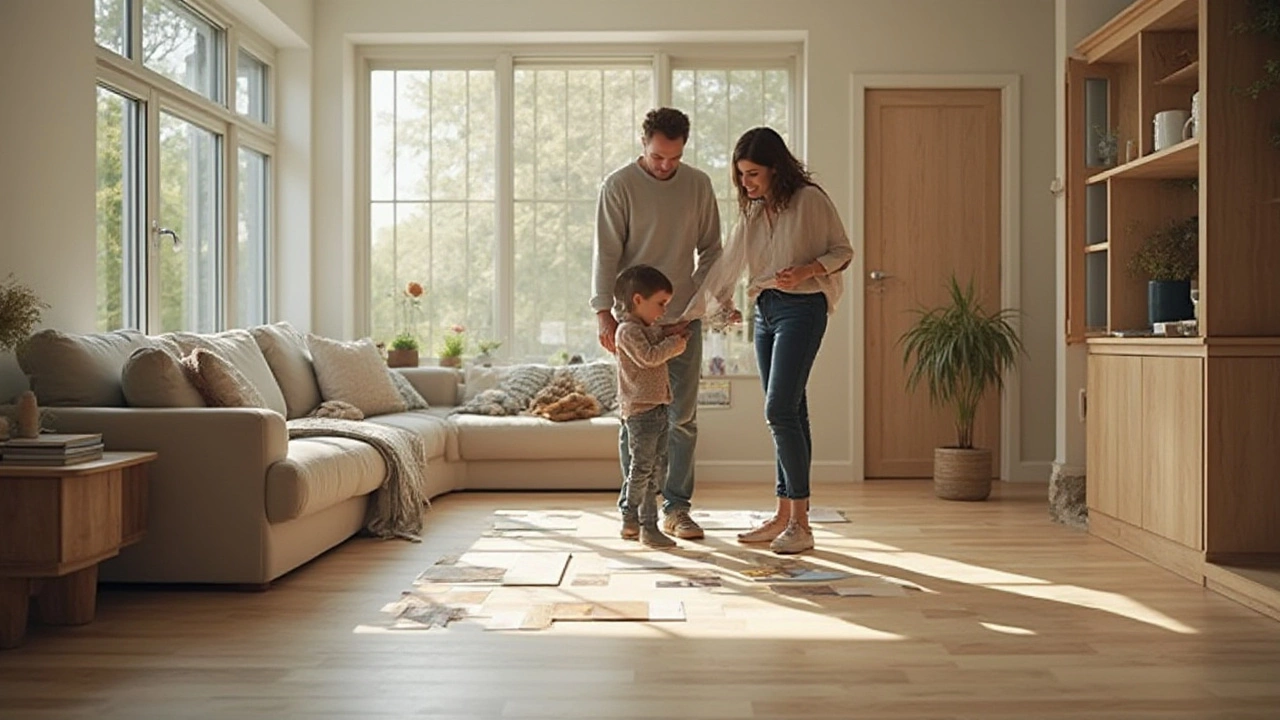Flooring Materials: The Practical Guide to Choosing the Right Floor
When it comes to home upgrades, the floor you pick can change how a room looks, feels, and holds up over time. You don’t need a PhD in design to make a good choice – just a clear idea of what each material offers. In this guide we break down the most common flooring options, what they’re best at, and how to match them to your lifestyle.
Top Flooring Materials and Their Best Uses
Hardwood gives a warm, classic look that never really goes out of style. It’s great for living rooms and bedrooms where you want a natural feel. You’ll pay more up front, and it needs occasional sanding and sealing, but it can be sanded and refinished a few times, extending its life.
Laminate mimics wood or stone without the price tag. It’s made of layers that lock together, so installation is quick. Laminate handles everyday wear well, but it’s not ideal for wet areas because water can seep into seams.
Vinyl (including luxury vinyl plank) is water‑resistant, soft underfoot, and budget‑friendly. It works nicely in kitchens, bathrooms, and basements where moisture is a concern. Modern designs look almost identical to real wood or tile.
Tile – ceramic or porcelain – is the go‑to for high‑traffic spaces and wet rooms. It’s hard, cool, and lasts decades with minimal maintenance. Grout lines need occasional cleaning, and tiles can feel cold under bare feet.
Carpet adds coziness and sound dampening, perfect for bedrooms and family rooms. It’s soft and affordable, but it stains and wears faster than hard surfaces. Choose low‑pile fibers for easier cleaning.
How to Pick the Right Flooring for Your Space
First, think about traffic. High‑traffic zones like hallways benefit from durable options such as tile or luxury vinyl. Low‑traffic rooms can handle softer choices like carpet or hardwood.
Second, check for moisture. Bathrooms, kitchens, and basements need water‑resistant materials – vinyl, tile, or sealed hardwood. Avoid regular carpet in these spots.
Third, set a budget. Hardwoods and premium tiles sit at the high end, while laminate, basic vinyl, and carpet are easier on the wallet. Remember to add installation costs – click‑lock systems are cheap to DIY, whereas stone tile often needs a pro.
Fourth, match your style. If you love a modern look, go for large‑format porcelain or sleek vinyl planks. For a cozy vibe, softer carpet or classic oak works well. Pull a piece of furniture or a paint swatch to see how the color interacts before you buy.
Finally, consider maintenance. Tile and vinyl need simple sweeping and occasional mopping. Hardwood requires periodic sealing. Carpet needs regular vacuuming and occasional deep cleaning. Choose a floor you’re comfortable caring for.
By asking these simple questions – traffic, moisture, budget, style, and upkeep – you can narrow down the options and avoid costly mistakes. The right floor not only looks good, it protects your home and saves you time.
Ready to start? Walk into a store, feel the surface under your foot, and picture how it would sit in your room. The best flooring choice is the one that feels right for your daily life while fitting your budget. Happy flooring!

